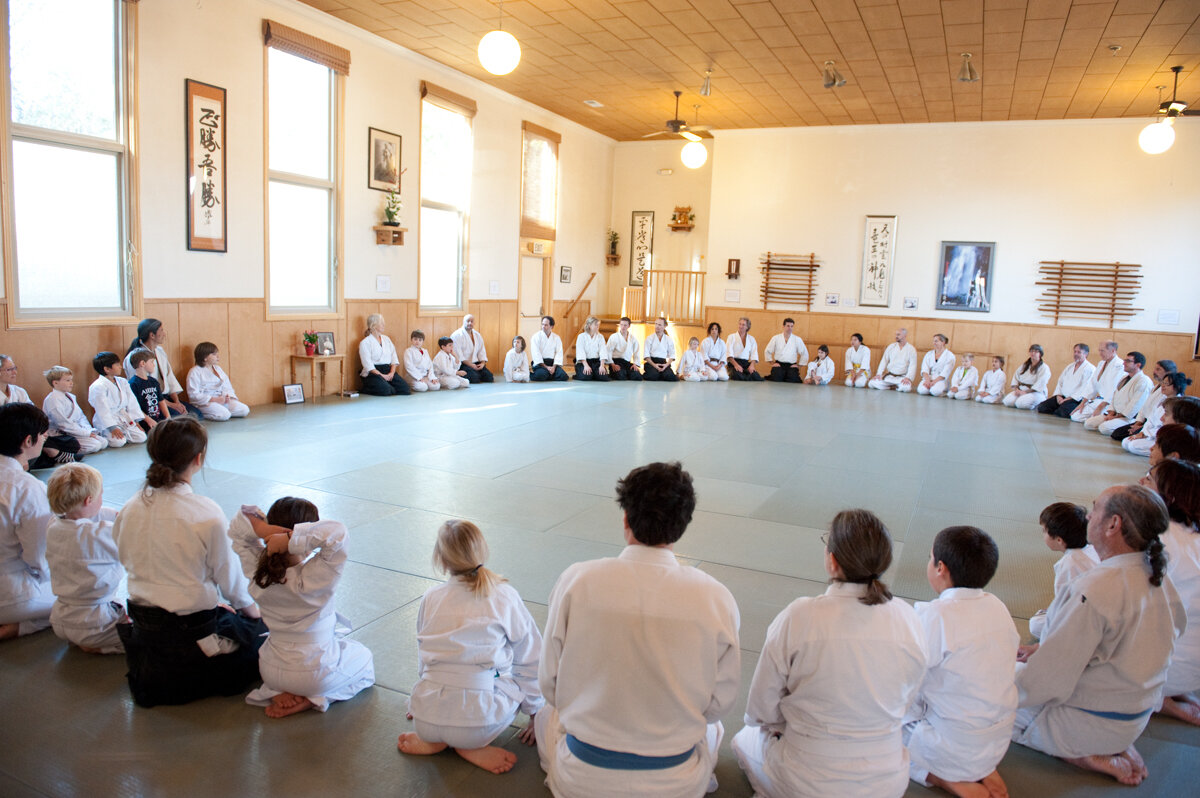
Ranking & Promotions at ASC
Tests Are A Natural Extension Of Training
Training is a long process. Each level you reach is about deepening your understanding of basic Aikido techniques, many of which you were introduced to in your first classes.
A test is an acknowledgement of your achievements and an invitation to go further in this endless process of learning and development. It is not designed as a razor’s edge pass/fail experience. In fact, your Senseis will not ask you to test for the next rank until they feel you are ready.
As you continue to train regularly and accumulate time on the mat you will eventually be asked to take a test to demonstrate your progress. For each test, you choose a partner or “uke.” Your uke can be any student who is senior to you in rank, and they will help prepare you.
During the test itself, your uke will bow in with you and then provide you with designated attacks, which you respond to with appropriate techniques. On tests you demonstrate a sample of what you have practiced in class. The people watching your test—your dojo community—are proud of you, support you, and respect your efforts. They will be your silent cheerleaders during exams.
Still, tests can feel daunting to people, especially the very first one for 5th kyu. Just remember; tests are simply another part of training, and you’ll do fine.




Belt Colors And Ranks
Adult Aikido of Santa Cruz students wear four different belt colors as they progress in training and test up in rank: the white belt for unranked and 5th kyu, a blue belt for 4th and 3rd kyu, a brown belt for 2nd and 1st kyu, and a black belt for the first black belt rank, called “shodan.”
At Aikido of Santa Cruz, those with black belts also wear the hakama, a part of traditional Japanese clothing which was worn by the Samurai. Black belt students, also referred to as “yudansha,” are happy to help out with any technique that’s confounding you, all you have to do is ask. Remember that people wearing hakamas may look formidable, but they’re just students who love Aikido and have trained a long time.
In addition to demonstrating growth in technical ability, a student must also spend a specific minimum amount of cumulative time on the mat as well as time between tests in order to progress and be considered for testing to the next rank. For each progressive rank those minimum times are:
For 5th kyu: a minimum of 50 total training days.
For 4th kyu: at least 60 training days since the previous promotion.
For 3rd kyu: at least 80 training days since the previous promotion.
For 2nd kyu: at least 100 training days since the previous promotion.
For 1st kyu: at least 150 training days since the previous promotion.
And for Shodan: at least 200 training days and 1 year since promotion to 1st kyu.
The technical requirements of our exams are based on those established by the California Aikido Association, of which we are an affiliate member.
How to Be Involved
If you are training regularly at ASC you will eventually be asked to participate in the examination process. However, you may also proactively reach out to dojo leadership in advance if you have questions or concerns.
You may specifically inquire about consideration for promotion at ASC if you are a former or current member in good standing. Please submit your inquiry by clicking on the button below. Dojo leadership will get back to you within a few days with an informal response to at least confirm that your inquiry was received. The Promotions Committee at ASC meets at least quarterly to consider candidates for promotion and will provide a formal response after the next scheduled meeting.
If you are a current member in good standing at Aikido of Santa Cruz you may also place yourself on a list of potential mentors for kyu or dan exams by pressing the button below and filling out the form.
“Aikido is a spiritual discipline, but the tool of this spiritual discipline is technique. The process of learning technique is what we use for increasing our self-awareness and transforming ourselves.”
~ Mary Heiny Sensei

Still have questions?
Get in touch with us and we’ll be happy to help.
